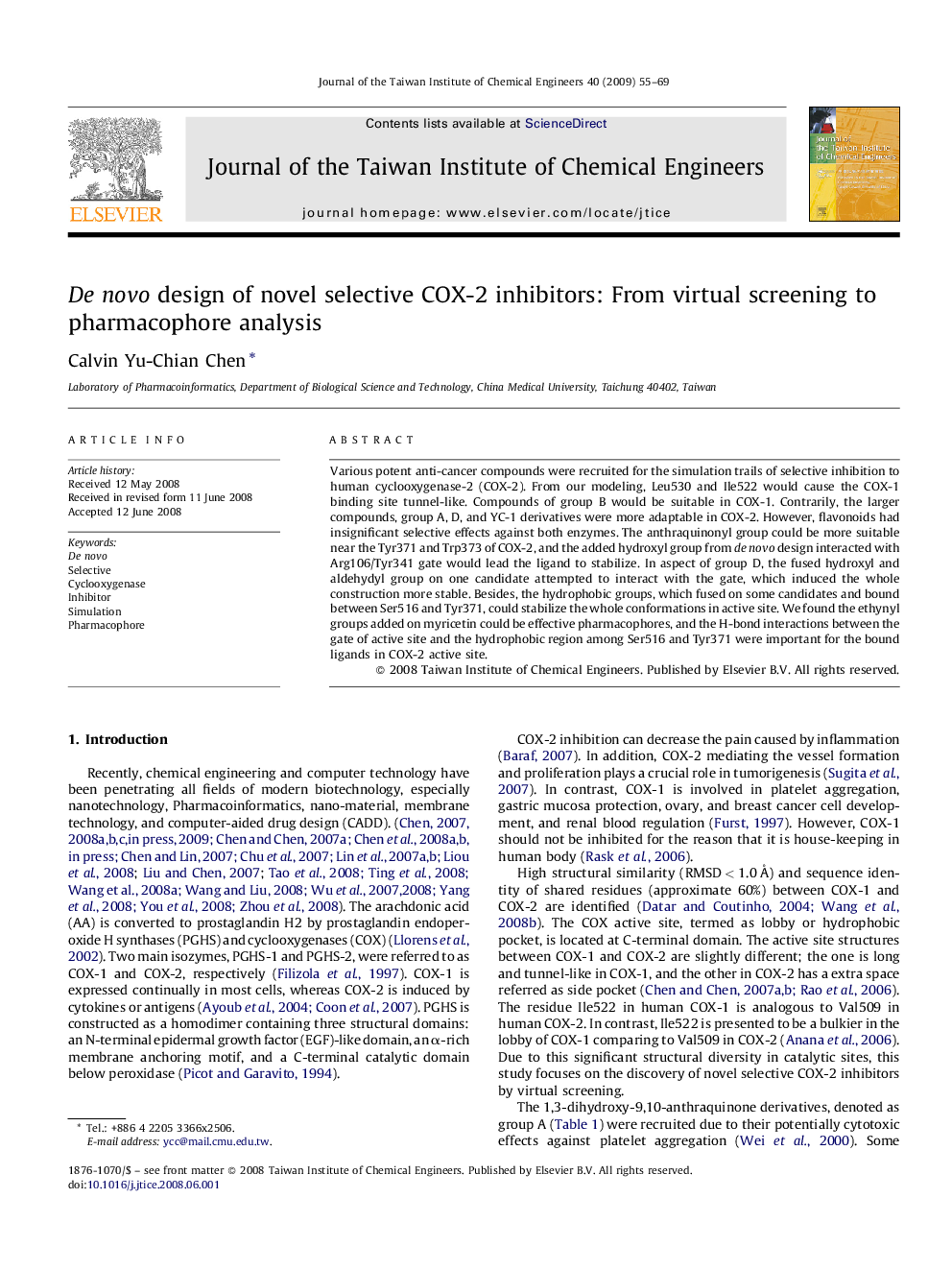| کد مقاله | کد نشریه | سال انتشار | مقاله انگلیسی | نسخه تمام متن |
|---|---|---|---|---|
| 691784 | 1460464 | 2009 | 15 صفحه PDF | دانلود رایگان |

Various potent anti-cancer compounds were recruited for the simulation trails of selective inhibition to human cyclooxygenase-2 (COX-2). From our modeling, Leu530 and Ile522 would cause the COX-1 binding site tunnel-like. Compounds of group B would be suitable in COX-1. Contrarily, the larger compounds, group A, D, and YC-1 derivatives were more adaptable in COX-2. However, flavonoids had insignificant selective effects against both enzymes. The anthraquinonyl group could be more suitable near the Tyr371 and Trp373 of COX-2, and the added hydroxyl group from de novo design interacted with Arg106/Tyr341 gate would lead the ligand to stabilize. In aspect of group D, the fused hydroxyl and aldehydyl group on one candidate attempted to interact with the gate, which induced the whole construction more stable. Besides, the hydrophobic groups, which fused on some candidates and bound between Ser516 and Tyr371, could stabilize the whole conformations in active site. We found the ethynyl groups added on myricetin could be effective pharmacophores, and the H-bond interactions between the gate of active site and the hydrophobic region among Ser516 and Tyr371 were important for the bound ligands in COX-2 active site.
Journal: Journal of the Taiwan Institute of Chemical Engineers - Volume 40, Issue 1, January 2009, Pages 55–69